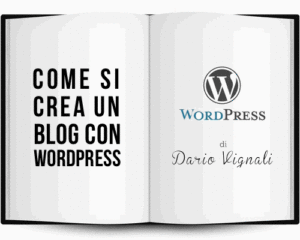Understanding cPanel for WordPress: Features and Benefits for Website Management
In the world of web hosting, cPanel has emerged as a vital tool for individuals looking to manage their websites without needing extensive technical skills. Primarily offered by many web hosting providers, cPanel serves as a user-friendly dashboard that simplifies the management of your WordPress sites, email accounts, domain names, databases, and more.
Understanding cPanel
Historically, managing a website’s hosting required a solid understanding of technical concepts. However, recognizing that not everyone possesses these skills, cPanel was developed to streamline this process. Today, it is widely recognized as the preferred solution for efficient web hosting management, whether your site is custom-coded or built on WordPress.
What to Expect from a cPanel Dashboard
The appearance of a cPanel dashboard can vary based on your hosting provider, but functionally, they all serve similar purposes. Generally, you will find an array of icons that link to different sections of your hosting account, alongside a sidebar that provides relevant information about your hosting environment.
Do All WordPress Hosts Utilize cPanel?
Not necessarily. While cPanel is the most popular choice, some hosting providers opt for customized control panels that offer similar functionalities. If you’re unsure about which control panel your host uses, it’s best to reach out to their support team for clarification.
The Role of cPanel in WordPress Management
In essence, cPanel is a management interface for web servers, whereas WordPress is a content management system (CMS) that enables you to create and manage your website’s content. To make your WordPress site accessible online, it must be hosted on a server. cPanel simplifies this process by providing a graphical interface that allows you to manage your server settings without requiring coding knowledge.
Accessing Your cPanel
Upon setting up your hosting account, your provider typically sends a welcome email containing your cPanel login details. If you can’t locate this email, you can access cPanel by appending either :2082 or :2083 to your domain name, depending on whether SSL is enabled on your site. For secure sites, use :2083; otherwise, opt for :2082.
Key Features of cPanel
Once logged into cPanel, you’ll find a variety of features that can enhance your website management experience:
- Install WordPress: Use Softaculous or other one-click installers to set up WordPress effortlessly.
- Manage SSL Certificates: Improve your site’s security and SEO by installing SSL certificates directly through cPanel.
- File Management: Utilize the file manager to upload, delete, and back up files without needing an FTP client.
- Create Custom Email Accounts: Set up professional email addresses that match your domain.
- Database Access: Access and manage your MySQL databases as needed for your WordPress site.
- FTP Connections: Create FTP accounts for more advanced file management options.
- Subdomains: Easily create subdomains to host multiple sites without purchasing additional domains.
Frequently Asked Questions
What is cPanel, and why is it essential for WordPress?
cPanel is a control panel that enables website owners to manage various aspects of their site, including files, databases, and domains. It’s crucial for WordPress users as it simplifies technical tasks like database creation and email setup.
How do I access cPanel for my WordPress website?
Log into your web hosting account and look for the cPanel icon or link. You may need to enter your username and password to gain access.
What are the most important cPanel features for WordPress users?
Key features include managing email accounts, creating databases, installing SSL certificates, using the file manager, and backing up websites. These tools are essential for self-managing your site or as part of a comprehensive maintenance service.
Can I create an email account using cPanel?
Yes, navigate to the Email Accounts section in cPanel to set up a custom email address associated with your domain.
Can I use cPanel to install WordPress?
While cPanel itself doesn’t install WordPress, it often includes Softaculous, which automates the installation process. Simply follow the prompts after selecting WordPress from the application list.
How can I back up my WordPress website using cPanel?
Access the Backup section of cPanel, and you can choose to back up your entire website or specific files.
Can I manage multiple WordPress websites with cPanel?
Absolutely! You can create separate databases for each site and manage them all from one cPanel account.
What should I do if I encounter issues with cPanel or my WordPress site?
If you face any problems, don’t hesitate to contact your hosting provider’s support team for assistance. They are equipped to help you resolve technical issues quickly.

